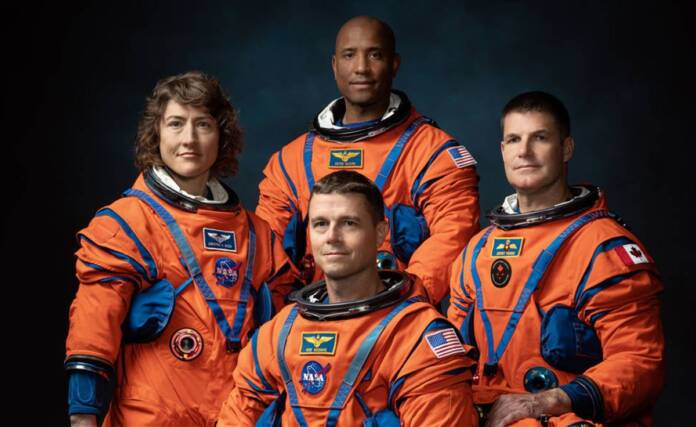On Monday, NASA unveiled the crew for its first human mission to the Moon in more than 50 years, including the first black man and woman to travel into deep space. The Artemis II mission is a prelude to returning humans to the Moon for the first time in half a century and to an eventual mission to Mars. The crew consists of Christina Koch, NASA astronaut, who will be a mission specialist; Victor Glover, a naval aviator who will pilot the Orion ship; Reid Wiseman, veteran NASA astronaut, who will be the mission commander; and Jeremy Hansen, a former fighter pilot for the Canadian Space Agency. The Artemis II mission is scheduled for November 2024.
The historic crew
The Artemis II mission crew is truly historic, with the first black man and woman to travel into deep space. Christina Koch is a NASA electrical engineer who set the record for the longest spaceflight by a woman and participated in the first all-female spacewalks while on the International Space Station (ISS). Victor Glover, for his part, will be the first black NASA astronaut to fly to the Moon.
The crew is completed by veteran NASA astronauts Reid Wiseman and Jeremy Hansen. Wiseman has spent time on the ISS and will serve as the mission commander, while Hansen, who will be making his first flight into space, will serve as the mission specialist.
Mission Preparation and Objectives
The Artemis II mission is crucial to NASA’s goal of establishing a sustainable human presence on the Moon and paving the way for a trip to Mars. The mission is scheduled to last 10 days and will test NASA’s powerful Space Launch System (SLS) rocket and life support systems aboard the Orion spacecraft. During the mission, the Orion spacecraft will orbit the Moon and return to Earth without landing on the lunar surface.
The Artemis I mission, which ended in December 2022, was the first test of the SLS rocket and Orion spacecraft, and Artemis II will be the project’s first manned mission. Artemis I lasted 25 days and was an unmanned mission that managed to return safely to Earth after orbiting the Moon. Artemis II will take humanity one step closer to exploring the Moon and other planets in the solar system.
The importance of space exploration
Space exploration has been a field of technological advancement and innovation, and has had a significant impact on society. In addition to its technological advances, space exploration has also led to advances in medicine, food, and environmental protection.
But beyond the tangible benefits, space exploration has had an emotional and spiritual impact on humanity. It has led us to look up at the stars and has made us reflect on our place in the universe. Space exploration has inspired us and given us the opportunity to dream big and aspire to achievements beyond what we thought possible.
The Artemis II mission is an important step toward exploring our solar system and possibly reaching Mars. In addition to exploration, this mission also symbolizes diversity and inclusion at NASA and in the scientific community. The Artemis II crew is proof that science and space exploration are for everyone and that everyone can be a part of it.













